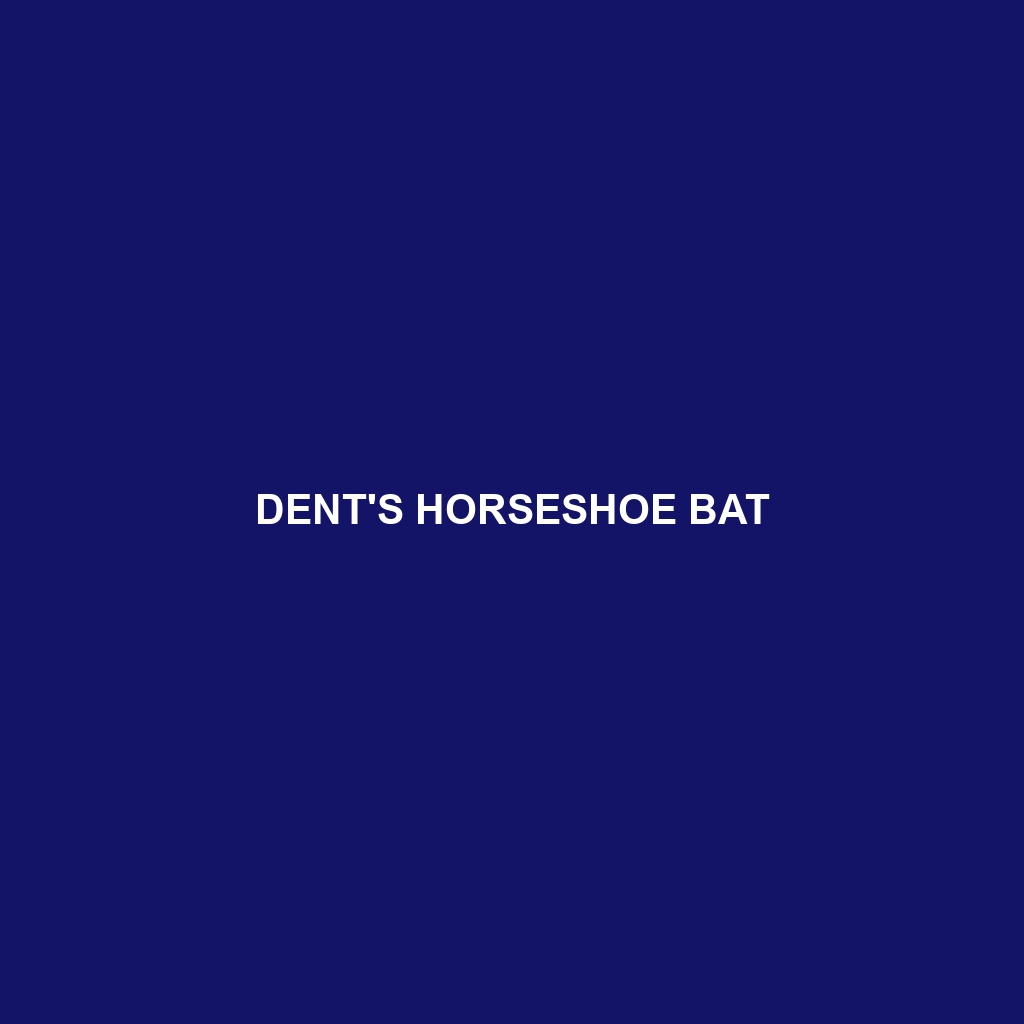Decken’s Horseshoe Bat (Scientific Name: Rhinolophus deckeni)
Common Name: Decken’s Horseshoe Bat
Scientific Name: Rhinolophus deckeni
Habitat
Decken’s Horseshoe Bat is primarily found in various regions across East Africa, particularly thriving in countries such as Tanzania, Kenya, and parts of Uganda. This species prefers subtropical or tropical moist lowland forests and is often located in habitats that provide ample roosting sites, such as caves and old buildings.
Physical Characteristics
Decken’s Horseshoe Bat is a medium-sized bat, generally ranging from 6 to 9 cm in body length. Their most distinguishing feature is the horseshoe-shaped noseleaf, which aids in echolocation. The fur is typically dark brown with lighter underparts, and their wingspan can extend up to 30 cm. The ears are well-developed, which contributes to their keen sense of hearing, essential for their nocturnal lifestyle.
Behavior
This species exhibits fascinating behaviors, including nocturnal foraging, where they take flight at dusk to hunt for insects. Decken’s Horseshoe Bats are known for their social nature, often roosting in colonies that can range from a few dozen to several hundred individuals. Their echolocation abilities are highly advanced, allowing them to navigate through dense foliage and detect prey with precision.
Diet
Decken’s Horseshoe Bat primarily feeds on a variety of insects, including moths, beetles, and flies. Their foraging habits involve gleaning insects from foliage or hawking through the air, utilizing their sharp teeth to capture prey. This insectivorous diet is crucial not only for their survival but also for controlling insect populations in their habitats.
Reproduction
The reproductive season for Decken’s Horseshoe Bat typically occurs during the warmer months, with mating often taking place in early spring. Female bats typically give birth to a single pup after a gestation period of about 60 to 70 days. Pups are born with their eyes closed and begin to fly within a few weeks after birth, quickly learning to forage for insects alongside their mothers.
Conservation Status
Currently, Decken’s Horseshoe Bat is classified as vulnerable on the IUCN Red List. The primary threats to their survival include habitat loss due to deforestation and urbanization, as well as potential impacts from agricultural practices. Conservation efforts are needed to ensure the survival of this unique bat species.
Interesting Facts
Decken’s Horseshoe Bat has an intriguing ability to adjust its echolocation calls depending on its environment, a behavior that enhances its hunting efficiency. Moreover, this species plays a significant role in the ecosystem by aiding in the pollination of some plants while controlling insect populations.
Role in Ecosystem
As important predators of insects, Decken’s Horseshoe Bats contribute significantly to their ecosystems. Their feeding habits help to maintain the balance of insect populations, which can prevent outbreaks harmful to crops and other wildlife. Furthermore, their role in pollination supports the reproductive success of several plant species, illustrating the interconnectedness of wildlife and vegetation within their habitats.
